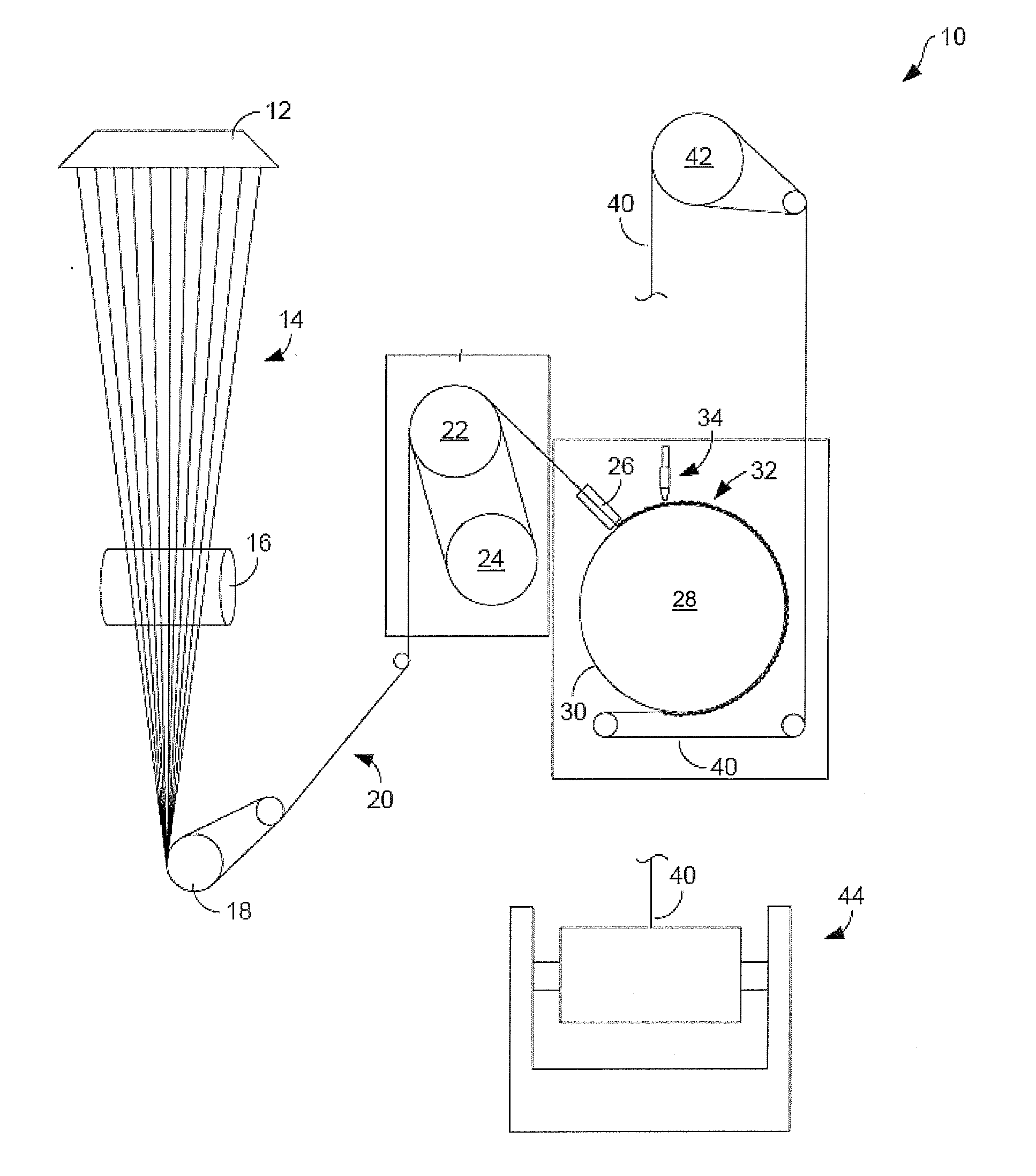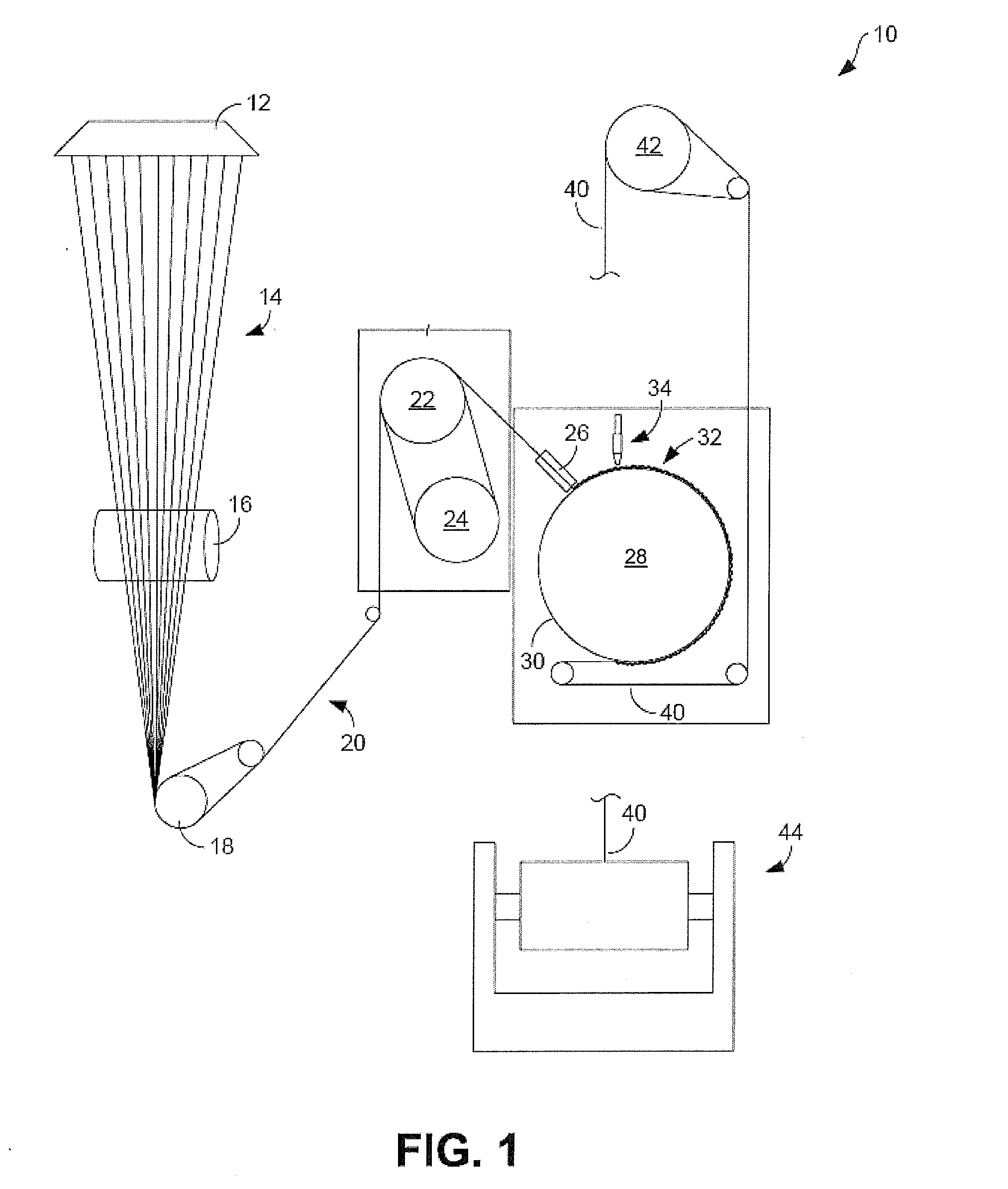Systems and methods for intermittently colored yarn
a technology of intermittent color and dyeing, applied in the field of textile industry, can solve the problems of achieve the effect of wide spread market penetration, low quality or high cos
- Summary
- Abstract
- Description
- Claims
- Application Information
AI Technical Summary
Benefits of technology
Problems solved by technology
Method used
Image
Examples
example 1
[0036]The polymer used for this example was a medium acid white dyeable Nylon 66 polymer having 42 milliequivalents of amine ends per 1000 grams, a viscosity of 67 RV and containing 0.15% TiO2. The polymer temperature before the spinning pack was controlled to be about 286+ / −1° C., and the spinning throughput was 76 pounds per hour. The polymer was extruded through a spinneret and divided into two 100 filament segments. The molten fibers were then rapidly quenched in a chimney where cooling air at approximately 10° C. was blown past the filaments at 300 cubic feet / minute (fpm) through the quench zone, and the fibers then were coated with a lubricant for drawing and crimping. The coated yarns were drawn at approximately 2,400 ypm (2.2×draw ratio) using a pair of heated (195° C.) draw rolls. The yarns were then forwarded into a dual-impingement bulking jet (225° C., 125 psi hot air). The bulking jet crimped and laid the yarn bundles on a rotating drum (45 rpm) with perforated holes to...
example 2
[0039]This example was similar to Example 1, except a steam chamber was installed above the caterpillar. Pressurized steam (35 psi, 260° C.) was blown onto the caterpillar to improve color fixing. Residence time of the BCF yarn inside steam chamber was approximately 160 ms.
example 3
[0040]This example was similar to example 2 except the flow of dye solutions were cut to half: 0.13% black dye solution on yarn and 0.25% rust dye solution on yarn.
PUM
| Property | Measurement | Unit |
|---|---|---|
| pH | aaaaa | aaaaa |
| pH | aaaaa | aaaaa |
| temperature | aaaaa | aaaaa |
Abstract
Description
Claims
Application Information
 Login to view more
Login to view more - R&D Engineer
- R&D Manager
- IP Professional
- Industry Leading Data Capabilities
- Powerful AI technology
- Patent DNA Extraction
Browse by: Latest US Patents, China's latest patents, Technical Efficacy Thesaurus, Application Domain, Technology Topic.
© 2024 PatSnap. All rights reserved.Legal|Privacy policy|Modern Slavery Act Transparency Statement|Sitemap



